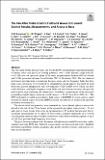| dc.contributor.author | Breneman, A. W. | |
| dc.contributor.author | Wygant, J. R. | |
| dc.contributor.author | Tian, S. | |
| dc.contributor.author | Cattell, C. A. | |
| dc.contributor.author | Thaller, S. A. | |
| dc.contributor.author | Goetz, K. | |
| dc.contributor.author | Tyler, E. | |
| dc.contributor.author | Colpitts, C. | |
| dc.contributor.author | Dai, L. | |
| dc.contributor.author | Kersten, K. | |
| dc.contributor.author | Bonnell, J. W. | |
| dc.contributor.author | Bale, S. D. | |
| dc.contributor.author | Mozer, F. S. | |
| dc.contributor.author | Harvey, P. R. | |
| dc.contributor.author | Dalton, G. | |
| dc.contributor.author | Ergun, R. E. | |
| dc.contributor.author | Malaspina, D. M. | |
| dc.contributor.author | Kletzing, C. A. | |
| dc.contributor.author | Kurth, W. S. | |
| dc.contributor.author | Hospodarsky, G. B. | |
| dc.date.accessioned | 2022-11-28T15:16:16Z | |
| dc.date.available | 2022-11-28T15:16:16Z | |
| dc.date.issued | 2022-11-25 | |
| dc.identifier.uri | https://hdl.handle.net/1721.1/146624 | |
| dc.description.abstract | Abstract
The Van Allen Probes Electric Fields and Waves (EFW) instrument provided measurements of electric fields and spacecraft floating potentials over a wide dynamic range from DC to 6.5 kHz near the equatorial plane of the inner magnetosphere between 600 km altitude and 5.8 Re geocentric distance from October 2012 to November 2019. The two identical instruments provided data to investigate the quasi-static and low frequency fields that drive large-scale convection, waves induced by interplanetary shock impacts that result in rapid relativistic particle energization, ultra-low frequency (ULF) MHD waves which can drive radial diffusion, and higher frequency wave fields and time domain structures that provide particle pitch angle scattering and energization. In addition, measurements of the spacecraft potential provided a density estimate in cold plasmas (
<
20
eV
$<20~\text{eV}$
) from 10 to
3000
cm
−
3
$3000~\text{cm}^{-3}$
. The EFW instrument provided analog electric field signals to EMFISIS for wave analysis, and it received 3d analog signals from the EMFISIS search coil sensors for inclusion in high time resolution waveform data.
The electric fields and potentials were measured by current-biased spherical sensors deployed at the end of four 50 m booms in the spacecraft spin plane (spin period
∼
11
sec
$\sim11~\text{sec}$
) and a pair of stacer booms with a total tip-tip separation of 15 m along the spin axis. Survey waveform measurements at 16 and/or 32 S/sec (with a nominal uncertainty of 0.3 mV/m over the prime mission) were available continuously while burst waveform captures at up to 16,384 S/sec provided high frequency waveforms.
This post-mission paper provides the reader with information useful for accessing, understanding and using EFW data. Selected science results are discussed and used to highlight instrument capabilities. Science quantities, data quality and error sources, and analysis routines are documented. | en_US |
| dc.publisher | Springer Netherlands | en_US |
| dc.relation.isversionof | https://doi.org/10.1007/s11214-022-00934-y | en_US |
| dc.rights | Creative Commons Attribution | en_US |
| dc.rights.uri | https://creativecommons.org/licenses/by/4.0/ | en_US |
| dc.source | Springer Netherlands | en_US |
| dc.title | The Van Allen Probes Electric Field and Waves Instrument: Science Results, Measurements, and Access to Data | en_US |
| dc.type | Article | en_US |
| dc.identifier.citation | Space Science Reviews. 2022 Nov 25;218(8):69 | en_US |
| dc.contributor.department | Haystack Observatory | |
| dc.identifier.mitlicense | PUBLISHER_CC | |
| dc.eprint.version | Final published version | en_US |
| dc.type.uri | http://purl.org/eprint/type/JournalArticle | en_US |
| eprint.status | http://purl.org/eprint/status/PeerReviewed | en_US |
| dc.date.updated | 2022-11-27T04:12:20Z | |
| dc.language.rfc3066 | en | |
| dc.rights.holder | This is a U.S. Government work and not under copyright protection in the US; foreign copyright protection may apply | |
| dspace.embargo.terms | N | |
| dspace.date.submission | 2022-11-27T04:12:20Z | |
| mit.license | PUBLISHER_CC | |
| mit.metadata.status | Authority Work and Publication Information Needed | en_US |
